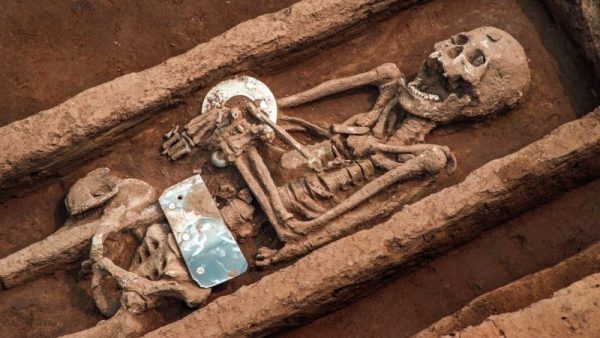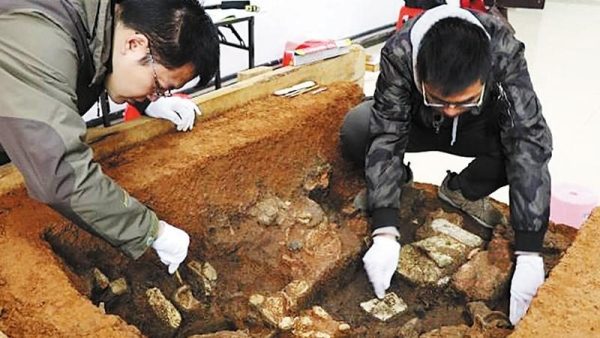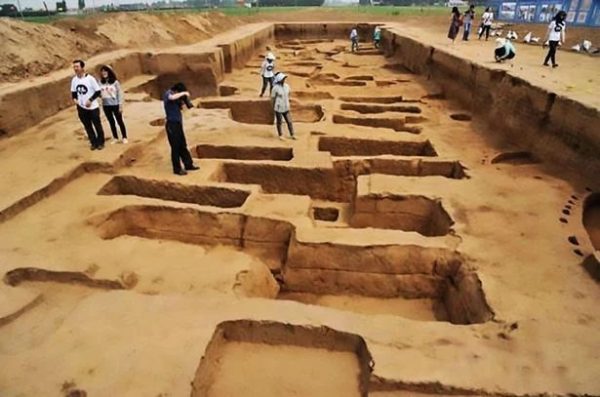An excavation in Shandong Province, southeast China, has revealed a graveyard containing the remains of individuals who were significantly taller than their Neolithic counterparts.

The bones, discovered in a tomb, include at least one male individual estimated to have reached a height of 1.9 meters (6 ft, 3 in), along with others measuring 1.8 meters (5 ft, 11 in) tall, making them giants in their time.
The head of Shandong University’s school of history and culture, Fang Hui, explained that these estimations are based on bone structure, and if the individuals were living, their actual height might have exceeded 1.9 meters.

For context, the average height of 18-year-old males in the region in 2015 was 1.753 meters (5 ft, 9 in), according to Xinhua. The national average in 2015 was 1.72 meters (5 ft, 8 in).
The dig, led by Fang’s team, has been ongoing in Jiaojia village in Zhangqiu District, Jinan City, since last year. The excavation has unearthed the ruins of 205 graves, 20 sacrificial pits, and 104 houses.
The researchers suggest that the people of the Longshan culture, named after Mount Longshan in Zhangqiu, enjoyed good food, contributing to their impressive stature. Agricultural practices at the time provided diverse and rich food resources, influencing the physique of the population.

The layout of the houses and the discovery of larger tombs containing the tallest individuals suggest that these giants may have held important status, providing them with better access to good food and a comfortable existence.
In addition to human remains and building foundations, the archaeologists uncovered pig bones and teeth, indicating animal farming. Colorful pottery and jade objects were also found at the site.
Some skeletons and cultural artifacts show signs of intentional damage after burials, hinting at possible political motivations or local power struggles during that period.

It’s important to note that these findings are preliminary and haven’t yet undergone peer review. The excavation site, covering only 2,000 square meters so far, represents a fraction of the intended area to be investigated.
The discoveries at Jiaojia offer a glimpse into the lives of ancient peoples, and there’s much more to learn about their way of life as further excavations continue.





